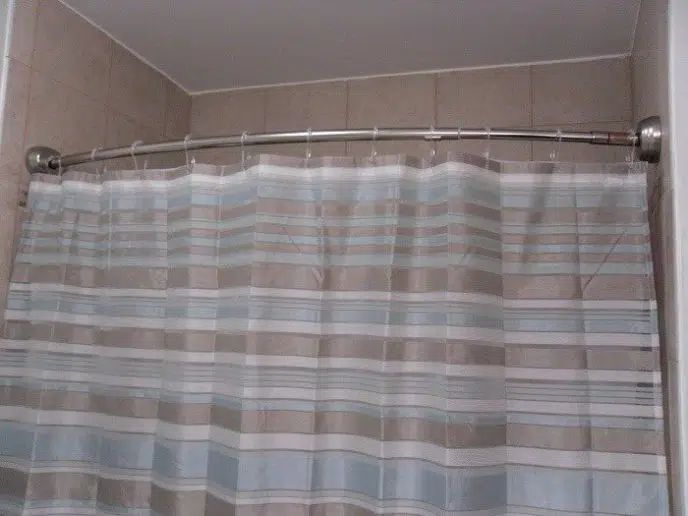If you’ve ever taken a shower and noticed your plastic shower curtain liner blowing inwards, it can seem a bit odd. Why does the shower curtain get sucked into the shower instead of blowing outwards? There are a few simple physics reasons that cause this phenomenon.
Page Contents
Air Pressure Differences
The main reason your shower curtain blows inward is due to differences in air pressure inside and outside of your shower. When you turn on hot water in your shower, the air inside the shower stall becomes warmer and less dense than the cooler air in your bathroom. This creates a pressure differential.
Warmer air naturally wants to rise and escape above cooler air. As the warm air rises and escapes out the top of your shower, it reduces the air pressure inside the shower stall. The higher pressure cooler air outside the shower then pushes inwards on the curtain, making it appear to suck inward.
The Bernoulli Effect
Another factor at play is the Bernoulli Effect. This principle of fluid dynamics states that an increase in the speed of a fluid correlates with a decrease in pressure. As the shower water speeds up and hits your body and the shower walls, its pressure drops. The relatively higher pressure outside air then gets sucked into the low pressure shower stall, pulling the curtain with it.
The Coanda Effect
The Coanda Effect also influences the shower curtain. As water sticks to solid surfaces and flows over them due to surface tension, differences in pressure are created. The moving water entrains surrounding air, pulling the curtain inward.
Strategies to Keep Your Shower Curtain From Blowing Inward
If you find your shower curtain constantly blowing inwards annoying, there are a few easy fixes:
- Use a weighted shower curtain liner – Weights or magnets sewn into the bottom hem keep the curtain hanging down straight.
- Install an inward-curved shower rod – Curved rods force the curtain to hang away from the water.
- Use a stiffer shower curtain liner material – Vinyl liners hold their shape better than lightweight plastic.
- Hang your curtainrod farther from the wall – Keeping the curtain away from the water stream reduces air entrainment.
- Take cooler showers – Less steam means smaller air pressure differences.
The Physics in Action
To better understand the physics of a shower curtain blowing inwards, it helps to visualize the forces at work. Here is a diagram showing the various pressure zones and air flows:
| Inside Shower | Outside Shower |
|---|---|
|
|
The combination of these pressure and flow dynamics results in air currents that push the shower curtain inwards. The plastic liner acts like a barrier that makes the air movements visible.
The Shape of Your Shower Matters
The shape and layout of your shower can also influence the shower curtain effect. Showers with a tapered shape that is wider at one end tend to create more airflow due to the Coanda effect. The angled walls help guide air currents inwards across the curtain.
Shower stalls with openings or gaps along the perimeter can allow more air exchange and cross breezes. This means more air currents to blow the curtain around.
Bathroom exhaust fans can make the problem worse. As they suck humid air up and out of the bathroom, they can lower the overall air pressure in the bathroom, creating a greater pressure difference across the shower curtain.
Rounding Out Corners Reduces Air Flow
Conversely, a shower design with rounded corners can help reduce problematic air currents. The rounded surfaces don’t allow the air to accelerate and hug the walls as easily, cutting down on the Coanda effect.
Humidity and Temperature Differences Are Key
In summary, the key factors that cause shower curtains to blow inwards are:
- A temperature difference between the inside and outside air.
- Humidity differences between the steamy shower air and drier bathroom air.
- Resulting air pressure differences, with lower pressure inside the shower.
- Air currents generated by the effects described above.
Understanding the science behind this phenomenon can help you minimize curtain-blowing with shower design and liner choices. While it can be mildly annoying, an inwards blowing shower curtain is a fun reminder of the physical laws constantly at play around us!
